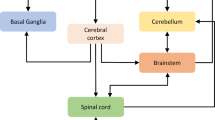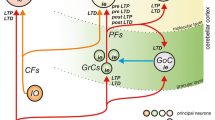Abstract.
This article describes an expanded version of a previously proposed motor control scheme, based on rules for combining sensory and motor signals within the central nervous system. Classical control elements of the previous cybernetic circuit were replaced by artificial neural network modules having an architecture based on the connectivity of the cerebellar cortex, and whose functioning is regulated by reinforcement learning. The resulting model was then applied to the motion control of a mechanical, single-joint robot arm actuated by two McKibben artificial muscles. Various biologically plausible learning schemes were studied using both simulations and experiments. After learning, the model was able to accurately pilot the movements of the robot arm, both in velocity and position.
Similar content being viewed by others
Author information
Authors and Affiliations
Additional information
Received: 4 September 2000 / Accepted in revised form: 7 November 2001
Rights and permissions
About this article
Cite this article
Eskiizmirliler, S., Forestier, N., Tondu, B. et al. A model of the cerebellar pathways applied to the control of a single-joint robot arm actuated by McKibben artificial muscles. Biol Cybern 86, 379–394 (2002). https://doi.org/10.1007/s00422-001-0302-1
Issue Date:
DOI: https://doi.org/10.1007/s00422-001-0302-1




